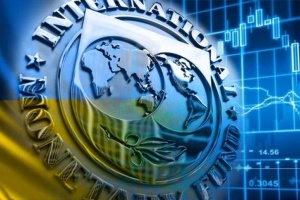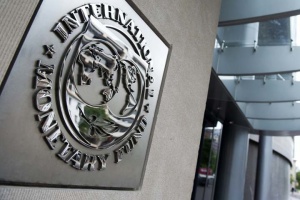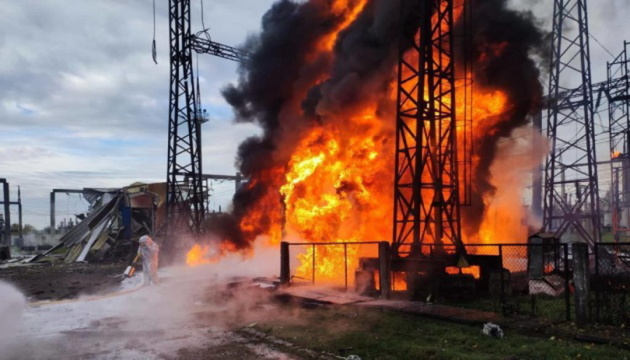
Enemy’s Energy Terror and Ukrainian Responses: Facts, Prospects and Forecasts
Since spring this year, Russia has been aggressively bombarding Ukraine's energy infrastructure, and this at the time Ukraine lacks anti-aircraft and anti-missile defense capabilities to defend itself from Russian attacks, while our partners are in no hurry to help. Meanwhile, enemy attacks take advantage of a "window of opportunity" in order to inflict painful blows on Ukraine’s energy sector.
WHICH OF UKRAINE’S ENERGY ASSETS HAVE BEEN TARGETS FOR RUSSIAN STRIKES
The attacks had the consequences as described below:
- On March 22, as part of a massive attack on the Ukrainian energy infrastructure, the Russian Federation targeted and hit a number of significant energy facilities, among them Dniproges (in Zaporizhzhia), Ukraine’s largest hydroelectric power plant, and Thermal Power Plant No. 5 (in Kharkiv).
- The next massive attack occurred on April 11, when the Russian Federation launched more than 80 missiles and drones at critical infrastructure facilities in Kharkiv and nearby areas. Approximately at that same time, the Trypillia Thermal Power Plant, located outside of Kyiv, which used to supply power to several Ukrainian oblasts, sustained critical damage from Russia’s missile attacks.
- On April 27, the Russians bombarded energy infrastructure assets in the Dnipropetrovsk, Ivano-Frankivsk, and Lviv oblasts. DTEK, Ukraine’s biggest private energy supplier, reported that the enemy had inflicted massive strikes on four thermal power plants in Ukraine.
- On May 4, a power substation located in the Dnipropetrovsk Oblast was severely damaged as a result of a Russian attack, and energy facilities in the Kharkiv and Odesa Oblasts have been subject to continuous shelling attacks by Russia.
- Finally, overnight from May 7 to 8, Russia once again launched massive missile attacks on electricity generation and transmission facilities in Poltava, Kirovohrad, Zaporizhzhia, Lviv, and Ivano-Frankivsk Oblasts.
On the morning of May 8, Energy Minister, Herman Halushchenko reported via Facebook that the Energy Ministry is weighing the potentiality of a decision to introduce power blackouts in the regions most affected by Russian shelling attacks. Gas storage facilities also came under fire - the enemy has started shelling them along with other energy assets this year.
As the Cabinet of Ministers reported via its official website, as of May 8, electricity blackouts have been introduced for residents of the Kharkiv Oblast (200,000 consumers) and the city of Kryvyi Rih. "In the past 24 hours, the consumer needs were covered by domestic generation and commercial imports. Meanwhile, at an urgent request from Poland, Ukraine was supplying electricity to that country in the evening peak hours. Today, at the request of Ukraine, an emergency supply of electricity is being carried out during the morning peak hours from the power systems of Poland, Romania, and Slovakia. In the evening hours, electricity supply limitations can be introduced for consumers."
Back in March, Prime Minister Denys Shmyhal reported that 80% of Ukraine’s heat generation capacity has been destroyed. One of these days, Herman Halushchenko published data indicating that the projected losses are estimated to reach up to USD 1 billion and will continue to grow. It’s is impossible to predict enemy attacks, but most analysts agree that they will continue, at least for as long as the enemy is in a position to reach out to our major energy facilities.
The impact of Russia meticulously destroying Ukrainian energy infrastructure can already be evaluated in economic terms, as seen in the recently published forecast by the National Bank of Ukraine (NBU). According to the document, electricity shortage will amount to 5–7% on average during the II–IV quarters of 2024, and that’s including imports and partial recovery and restoration, and the installation of new generation capacities. The report states among other things: "Economic recovery will continue, although it will be slow going, primarily due to significant damage done to energy facilities." The NBU has cut is growth forecast for real GDP, due to the consequences of large-scale attacks, to 3% in 2024 and 4.5-5% in 2025-2026.
WHAT TO GET READY FOR?
In addition to the slowing down in the pace of economic recovery, the electricity shortage is casting doubt on whether Ukraine will be able to make the necessary preparations in time for the start of the new heating season, and to protect the already recovered or yet intact energy infrastructures from new attacks.
Should consumers be prepared for rolling blackouts next winter? Should they be looking for generators or stove-heated country houses? Will the energy system be able not only to restore what was lost, but also to change the Soviet-style approaches with their inclination to gigantism. Big power generating capacities left behind by the Soviet Union in Ukraine turned out to be a weak link amid war. Hitting one power generating facility that is critical to energy supply security of a vast territory isn't too much of a challenge for the enemy. Unfortunately. Can renewable types of energy generation - solar or wind power plants -- help Ukrainians survive the winter months of 2024-25; will the entire system have enough time to adjust and adapt, and will the European energy system support ours in the winter period?
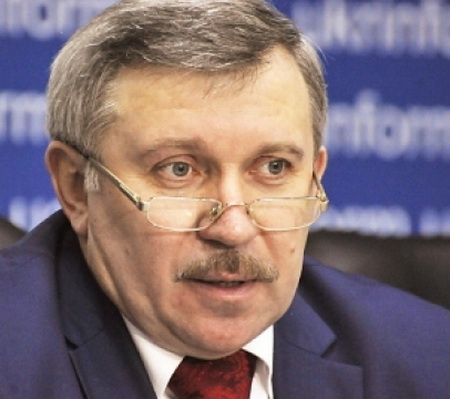
Mykhailo Honchar, an expert in international energy and security relations, president of the Center for Global Studies "Strategy XXI", gives a brief, unequivocal answer to the question regarding Ukraine’s ability to recover and rebuild its energy-generating capacity in due time. “We will not have time to do this”, he says, and continues: “The extent of the damage makes it impossible to build back or restore these facilities to working order. They need to be built from scratch." However, the expert doesn’t think that the extent of the destruction and damage is such as to entail catastrophic consequences for electricity consumers: "Ukraine’s new, unified system continues to operate, despite Russia's efforts to bring it into collapse."
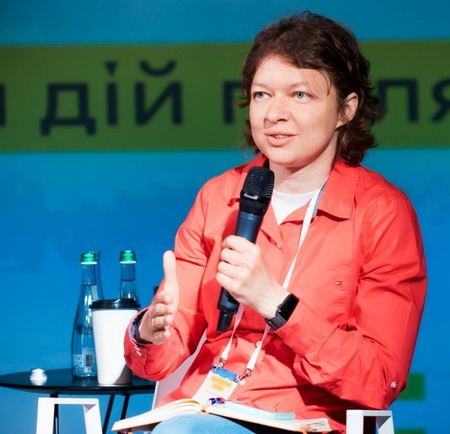
Olena Pavlenko, director of the "Dixie Group" think tank and the founder of the UA Energy website, deliberates about what kinds of assets have higher chances of being recovered or reconstructed. “Infrastructure assets involved with the power transmission lines run by [the National Power Company] Ukrenergo or [Ukraine’s largest hydro power generating company] Ukrhydroenergo, for example, have a better chance to resume operations as usual in time for the start of the new heating season, as funding for such facilities is provided by both donor countries (in substantial amounts) and the Ukrainian government”.
But things are not that good with coal generation, which has suffered severe damages due to Russian aggression. The gas generation industry, the expert believes, is facing severe challenges regarding recovery and restoration: "International partners are reluctant to provide funding for what involves coal in the first place." The only scenario, which experts consider somewhat ironically, but hope that it can become a reality, is that Germany, which is phasing out its coal-fired power stations from operation, can help us with equipment. Perhaps we will find out more similar examples. If this is the case, says Ms. Olena, there are chances part of these capacities will be restored.
Restoration of gas generation capacities, Olena Pavlenko explains, could be funded to a substantial extent by the European Bank for Reconstruction and Development (EBRD) or the World Bank: "If four conditions are in place and met, among which are a threat to national security and there are no alternative sources of funding, Ukraine meets all four the criteria to qualify for such funding. Next, the task for the government and diplomats will be to properly conduct these negotiations so that this window of opportunity is opened for us."
HOW WILL WE BE ABLE TO SURVIVE THE WINTER?
The winter season 2023-24 went without any serious troubles in terms of electricity supply for the Ukrainians located at the home front. However, when forecasting prospects for the new winter season, experts recommend looking at the situation without rose-tinted glasses and keeping in mind the winter season 2022-2023 with its rolling blackouts, at least. Some, Mykhailo Honchar among them, offer an option involving the “relocation to a country house heated by a wood stove in case of a protracted electricity outage, because nobody rules out the possibility of new Russian attacks and damages”.
Mykhailo Honchar: "The current stock of power generation capacities is much lower than what it should be to ensure the smooth passage of the heating season 2024-2025. Add to this, we cannot predict new attacks or the damage they can bring along. Nobody doubts the possibility of new attacks. The situation in this regard looks thus: it is necessary to do as much as possible in terms of rebuilding and restoring what can be rebuilt and restored."
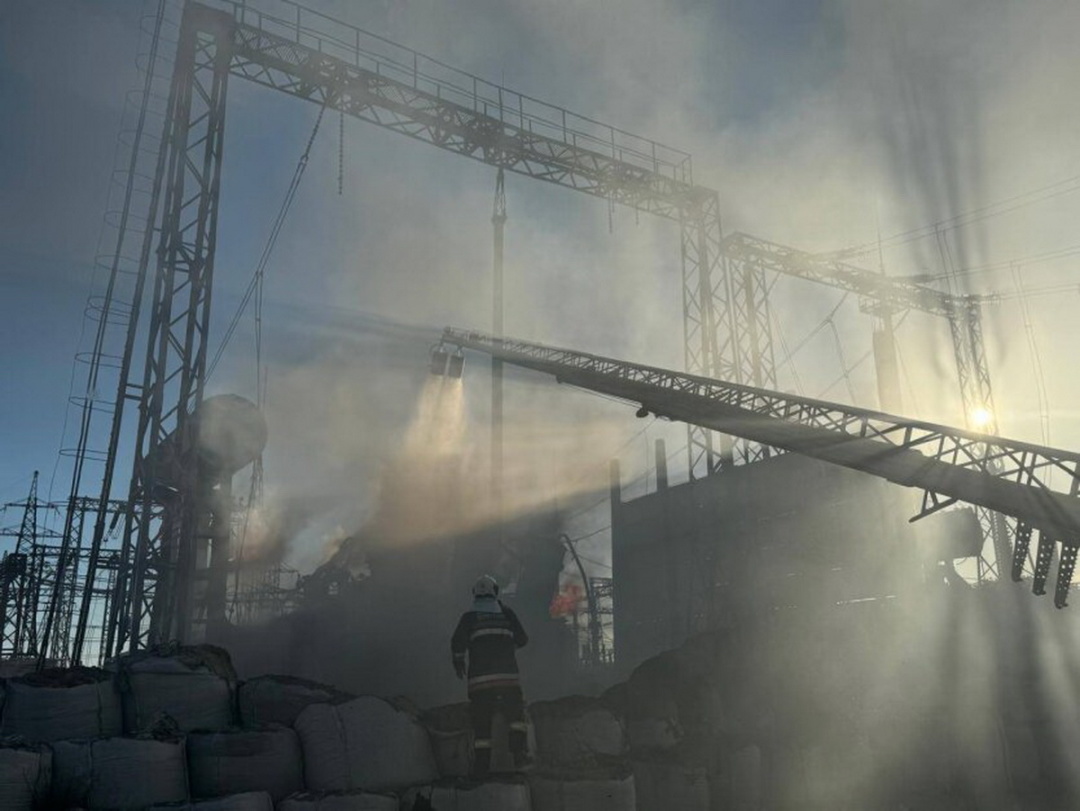
The Russians are going on with the tactics they used in 2022-2023, aimed at destroying Ukraine’s energy infrastructure. Whereas in the past they overestimated their ability to do this in one season, they are now taking advantage of the delay in financial aid and the delivery of weapons from Ukraine's partners, seeking to attack and hit what they can reach and adding large generating assets and gas storage facilities to their list of targets. "After all, no one can guarantee you one hundred percent security," the expert explains.
Olena Pavlenko agrees that, although it’s impossible to shield each and every large facility from strikes, what can be protected must be protected using all means available: "The heavy strike the Russians made on our power generating capacities in March came as a wake-up call for many in the West. But a thermal power plant cannot be protected with an anti-drone net. For large objects like this, systemic solutions involving most particularly air defenses are what is needed. And the West seems to have understood this." But will they be able to find enough air defense systems to cover every strategic object? Ms. Elena's answer is diplomatic: "I'm sure that everyone will do everything possible to provide cover for yet intact facilities, given the situation where we are now."
Should we place expectations on Europe’s integrated energy system that is currently helping Ukraine withstand peak loads by supplying electricity? "Regarding emergency assistance from the European energy system, to which we are an integral part from 2022, it may be insufficient. Because we cannot predict the peak consumption, as it depends on the weather conditions as well as on what will remain in operation or will be recovered. It’s important to appreciate that aid of some kind will be there. But where the shortage of generation capacities becomes chronic, there will be nothing else left but to limit the consumption of electricity by introducing rolling blackouts”, the expert says.
"We are already using these opportunities in many ways," says Olena Pavlenko. "Yes, in principle, opportunities for electricity importation will be opening up for us if necessary. But we must realize that we will have to pay the European price for the electricity we will buy. Energy will not be free for us, and the European Union, the expert is confident, is already working out options to help Ukraine compensate electricity shortages when and where needed.
But peak-time shortage can be significant. Let's say that Ukraine has the capacity to import up to 2 GW, whereas the shortage caused by shelling attacks in 2023 amounted to 4 GW. Based on these figures, we may not have enough of these capacities.
Olena Pavlenko agrees: "At peak-consumption hours, this will not suffice even with continuous import. The question is how big the shortage will be. I repeat it again: any predictions can be made knowing the weather forecast and our actual capacity to reconstruct and recover”.
"In the winter of 2022-2023, we were able to restore 3 GW of generation. And that's not bad. If we can find resources and equipment again this year, then, in principle, we will get through the season successfully, although it will be difficult."
WHAT ARE THE OPTIONS AVAILABLE TO UKRAINE?
"It is estimated that Ukraine will need about $17 billion in investments to fully restore its energy sector," Maksym Bevz and Oleh Savycky argue in an article published by Economic Pravda outlet. They argue that, in the current situation, it is the transition to renewable energy and to distributed, smaller generating capacities that would provide a way out. The authors suggest: "In the face of increased attacks on our energy infrastructure, it is necessary to build distributed, highly maneuverable generating capacities and battery electricity storage facilities to ensure flexibility and sustainability of the energy system and of the investments in distribution networks."
Olena Pavlenko considers the decentralization of generation capacities to be the only way out of the situation and a highly appropriate solution to reforming the system as a whole. "This is a very appropriate decision, given the situation we are in now. My opinion is that this process of transition should be controlled, so that it is not some kind of chaotic placement of various objects in different territories, and in the future, heroic efforts to integrate this all into a single grid."
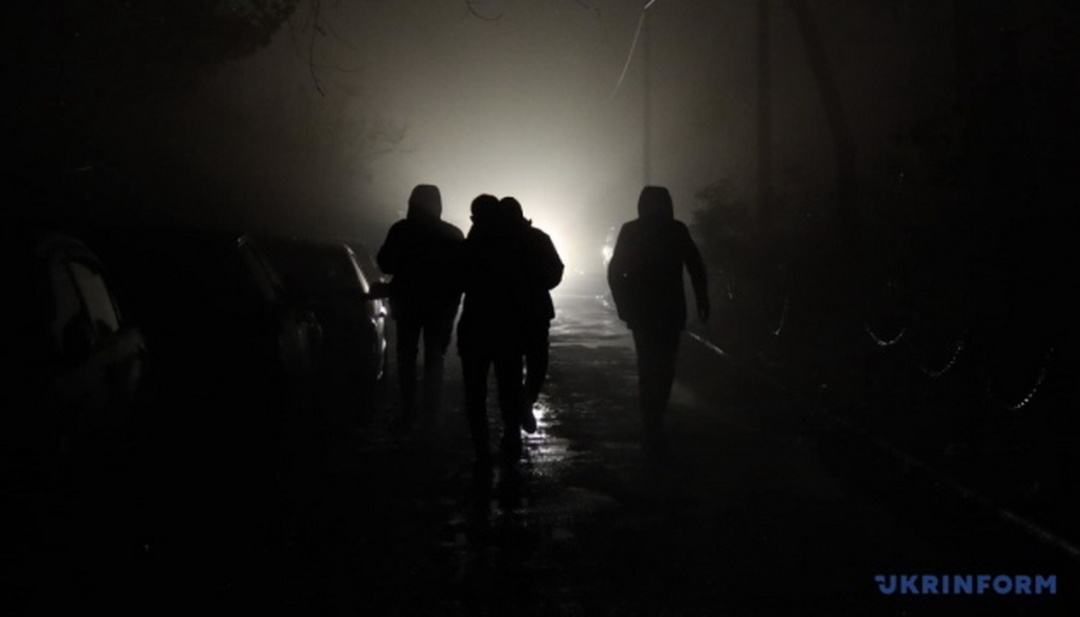
For the time being, the question remains as to a unified vision of the system as a whole and of its development: "A lot depends on how we see the further development of the economy. Where will we have large industrial facilities, where do we locate them? A large generator will have to be installed there. Where will the population be? The people have moved to other locations. We expect that people will be stimulated to return. If so, where to? Accordingly, this will also affect the planning of the decentralized system."
The idea of renewable energy is very good, but Mykhailo Honchar emphasizes two aspects: relatively high cost of battery storage facilities and of installation operations. It will not be possible to find a sufficient amount of such equipment for the entire country, and even less so if the equipment is needed "earlier than yesterday". The expert makes mention of another option, which is to "…use the capabilities of our gas transit system. There are excessive capacities of gas compressor stations, where generators can be installed, and they too could produce additional volumes of shunting power generation for the entire system. But again, this is not the first year they have been talking about it, but nothing has been done."
The transition to decentralized generation, that is, the creation of small generation facilities, can save the situation, but not everywhere. Mykhailo Honchar continues: "Basically, such facilities will work on gas; if they are the dispersed throughout regions, it will be a salvation for everyone. In theory, this is correct, but it is also not an issue that will be resolved in a few months. Some regions will have time to purchase or receive a mobile or compact boiler installation in a few months, but some will not have time to do this. It, this boiler installation, still needs to be contracted, because in warehouses in Europe or America, they are not stored in thousands and waiting to be ordered. If we are talking about all of Ukraine, this will take years.
It takes time to implement new technologies and approaches, and, again, it is not measured in months, but in years. And so far for the entire country, the starting point in structural reorganization is not yet visible. Instead, we still rely on nuclear energy. Olena Pavlenko says that there are projects for construction of new nuclear power units, but, again, this is not a matter of the upcoming Fall, but of several years.
Mykhailo Honchar agrees: "One way or another, our basic generation is atomic, and it will remain so. Currently, we get 70% of our electricity production from nine power units at three nuclear power plants. That is why it is important to ensure they remain operational. To this end, he continues, "our partners from the “coalition of the determined”, including France in the first place, should decide to set up a humanitarian mission with a mandate covering the western regions of Ukraine, stretching from the north, along the boundaries of, say, Rivne Nuclear Power Plant (NPP), Khmelnytska NPP, and South Ukrainian NPP, in order to provide air defense for this area, where our main generating and transmission facilities are located. Roughly speaking, everything that flies into this area from the Russian territory -- cruise missiles, drones – must be destroyed by the air forces of those countries that will be ready to do this mission.”
The ability to adapt, to act in concert and in an asymmetric way - this is what wartime conditions require for the energy sector among others – to enable it to withstand the blow and recover in such a way so that the enemy could not deliver destructive strikes in the future. This will preclude hits on large infrastructural targets on the one hand, and will give an opportunity to rebuild Ukraine’s energy supply system into a decentralized one, on the other. And this opportunity must be availed of immediately, along with an opportunity to provide maximum protection possible for large targets.
The situation regarding the recovery and restoration of the energy system as shelling attacks never end is impossible to predict. But there must be an understanding that part of the lost capacities will definitely be recovered -- despite the hard times and with joint efforts. What Ukraine will need to do after that happens is to fight, protect infrastructures and hope for a warm winter. The enemy will anyway not be able to break us, because light always prevails over darkness.
Yaryna Skurativska, Kyiv



